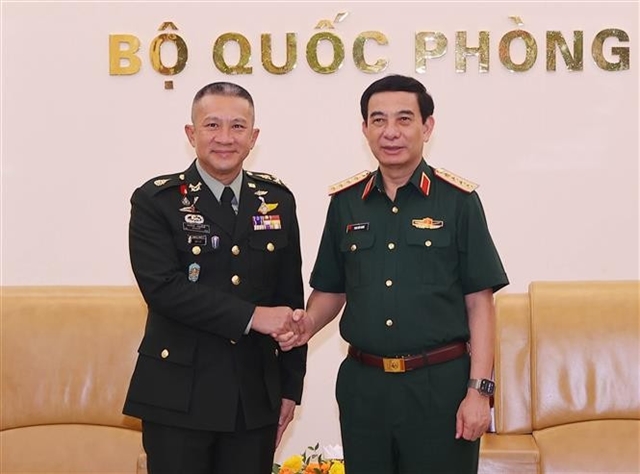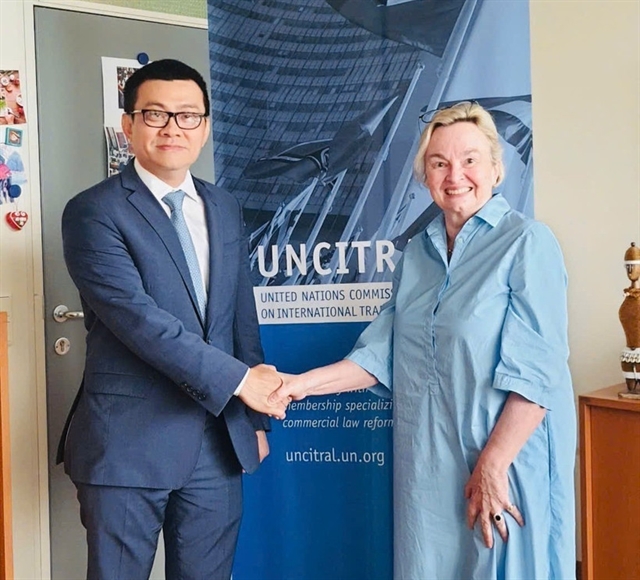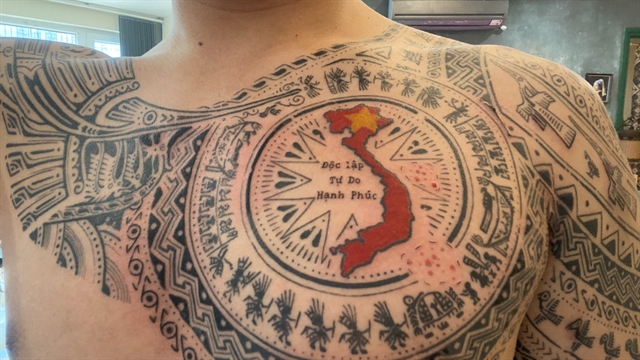 Features
Features

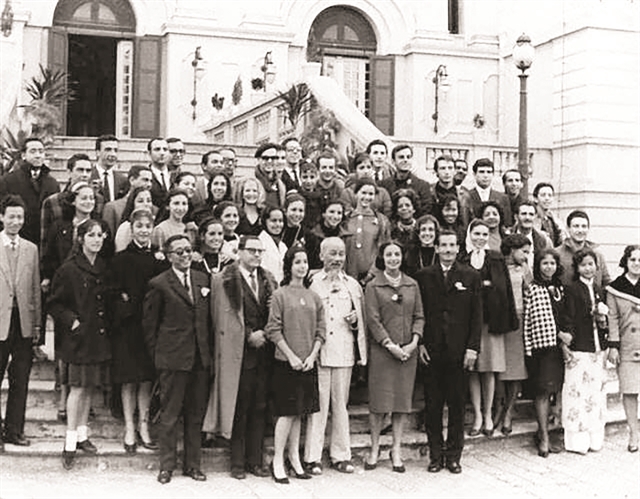 |
| President Hồ Chí Minh (centre front row) hosted The Ballet Nacional de Cuba led by Alicia Alonso (on his left) on December 19, 1964 at the Presidential Palace in Hà Nội. Photo courtesy of Osvaldo Salas, Revolución newspaper |
by Nguyễn Mỹ Hà
In the large yard of Hà Nội's Temple of Literature, Cuban ballerina Viengsay Valdés led her members of Ballet Nacional de Cuba (BNC) to explore Vietnamese culture first hand. They had a couple of days break between the two shows at Hà Nội's modern Hồ Gươm Opera House.
Having spent some years as a child in Laos, where her father was the first Cuban Ambassador, Viengsay has known it well. "The truth is, every time I return to dance here in Việt Nam, it's a very special moment. My name is Asian, and of course, I've always felt very close to the culture," she said.
"Laos and Việt Nam are very close countries, very friendly to Cuba, and that's why since I was a child I've always heard about Việt Nam and the history between the two countries," Valdés added.
This year, Cuba and Việt Nam are celebrating the 65th anniversary of diplomatic ties and a series of events and activities have been underway throughout the year, with a grand celebration coming in December.
In 1960, one year after the success of the Cuban Revolution, Việt Nam's Prime Minister Phạm Văn Đồng and Cuban Foreign Minister Raoúl García signed papers to make the two countries strategic partners on all levels, as a result of their ideology.
Fidel Castro became Prime Minister of the new Cuba and the friendship between the two countries has developed into a trusted relationship that both gave each other a helping hand in the most difficult times.
"With such a milestone coming up, we considered it essential for the Cuban National Ballet to be represented here in Hà Nội," Ambassador Rogelio Polanco Fuentes told Việt Nam News after the first night of BNC at Hồ Gươm Opera House.
"In 1964, Alicia Alonso, founder of the BNC, came to Việt Nam in the midst of the War of Resistance. She danced in Việt Nam and had the privilege of meeting with President Hồ Chí Minh," Fuentes said, adding that it was a foundational moment for the BNC and for cultural relations between Việt Nam and Cuba.
"And so, as we commemorate this year of friendship, the Cuban National Ballet returns, with several of its members and its general director at the helm, to remember that history and offer this gift of culture, art and friendship to the people of Việt Nam," Fuentes added.
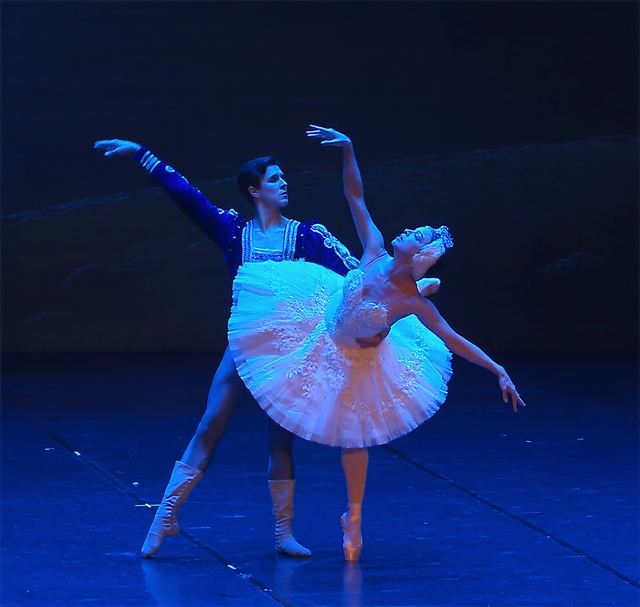 |
| Viengsay Valdés dances with Dani Hernández. VNS Photo Đoàn Tùng |
Ballet for the people
Born in 1920 in Havana, Alicia Alonso learn to dance at nine years old. At 16, she moved to the United States and continued to study ballet with masters in New York City, such as Enrico Zanfretta and Alexandra Fedorova from the School of American Ballet. The next year, she married Cuban ballet dancer Fernando Alonso.
She launched her career in 1938 on Broadway and soon became part of the American Ballet Caravan, today known as the New York City Ballet. She joined the Ballet Theatre in New York in 1940 as a founding member and remained with the company until 1956. Today it is known as the American Ballet Theatre.
Having been part of New York City's two most influential ballet companies, Alonso made her name in the ballet stage dancing in pre-World War II Europe and the Americas in the lead role as prima ballerina in romantic and classical performances.
She also worked with some of the 20th century's greatest choreographers, such as George Balanchine, Mikhail Fonkine and Bronislava Nijinska. She starred in classic productions including Giselle, Carmen and Swan Lake.
In 1948, Alonso founded her own company in Havana and opened an academy shortly after. But financial difficulties held her back, and the company was forced to close in 1956.
Before the Cuban Revolution, Alonso had left for the United States, but in 1959 Alonso returned to the island state, where she received financial help from new Prime Minister Fidel Castro to establish Ballet Nacional de Cuba along with her husband and his brother Alberto.
Since then, she had remained a supporter of the revolution and operated a school of ballet in her home country.
Cuba today produces some of the world's best ballet dancers thanks to Alonso's mission: in Cuba, ballet is no longer a restricted art for the elite, but for the people to study, enjoy and contemplate. Ballet classes are free for children, and ballet tickets are affordable for the majority of the population.
In 1960, Alonso started the first International Ballet Festival of Havana, which today still brings some of the world's best ballet companies to Cuba. The American Ballet Theatre presented at the inaugural festival, but in 1962, the United States began its economic embargo against Cuba.
Alonso took ballet out of its restricted environs of the performing stage to a down-to-earth environment. BNC General Manager Viengsay Valdés told Việt Nam News in her native Spanish, "She led her troupe to tour the island, dancing in factories, stadiums, farms and small Cuban towns, bringing the art of ballet to the entire island. Ballet, which is typically elitist in the rest of the world, has become incredibly popular in Cuba. There's no one who doesn't know who Alicia Alonso is in Cuba."
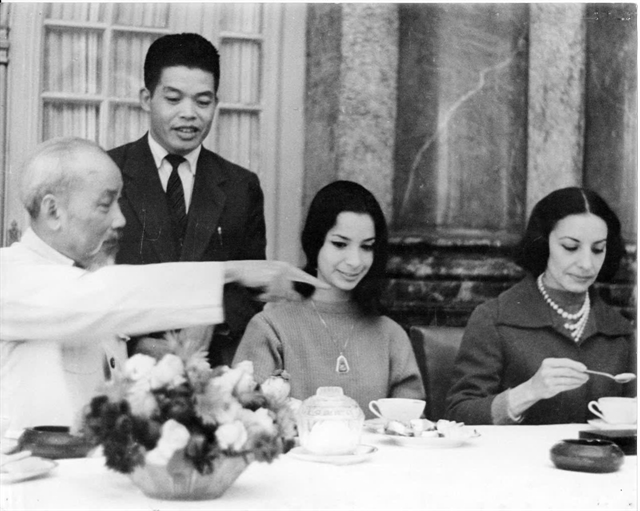 |
| From left, President Hồ Chí Minh, interpreter Lê Đức Căng, ballerina Mirta García and Alicia Alonso had breakfast with President Hồ Chí Minh in the Presidential Palace on December 19, 1964. Photo courtesy by Osvaldo Salas, Revolución newspaper |
In 1964 while Việt Nam was still in its resistance war against the United States, Alonso led a BNC troupe to Việt Nam to perform in Hà Nội. They met President Hồ Chí Minh, who was quoted as telling the Cuban artists that it would not be long until they could perform in a liberated and united Việt Nam.
The president's forecast finally became true in 1978, when Alonso led a troupe to perform in Hà Nội and Hồ Chí Minh City.
It was well-known in the industry that Alonso had an eye condition that did not improve after treatment with top doctors. Her eyesight started to deteriorate quite early in her career, and at points she had to dance partially blind and guided on stage by strong stage lights.
Despite such poor eyesight, she danced into her 70s and retired in 1995 in Italy, at the age of 75.
Alonso's dedication to establish, develop and maintain Cuba's school of ballet earned her the highest honours not only in Cuba, but also around the world.
She received an honorary doctorate from the University of Havana in 1973, and the Cuban government awarded her the Order of Jose Marti in 2000.
President Raoul Castro presented her the top arts teaching prize in 2010. She also received other prestigious awards from Spain, France and UNESCO.
Carry on the Cuban way
It took yet nearly 30 years for the BNC to return to Việt Nam. In 2016, it was led by world-class ballet icon Viengsay Valdés.
The night it performed at Hà Nội's Workers' Theatre on Tràng Tiền Street, a tropical storm named Dianmu hit Hà Nội with heavy rain and strong wind.
The city's authorities warned Hanoians not to get out on the street, and to avoid construction sites and tall trees. Still, spectators were eager to watch BNC artists perform.
The weather could be stormy, but the relationship between Cuba and Việt Nam has always overcome incredible dangers of war, geographical distance and economic sanctions.
Last year Valdés returned to Hà Nội for the 60th anniversary of the first trip in 1964. This year, she also led a troupe as part of the 65th anniversary celebration.
"Here in Việt Nam, every time we perform, people are eager to see us dance and show us so much affection and an incredible welcome," Valdés said.
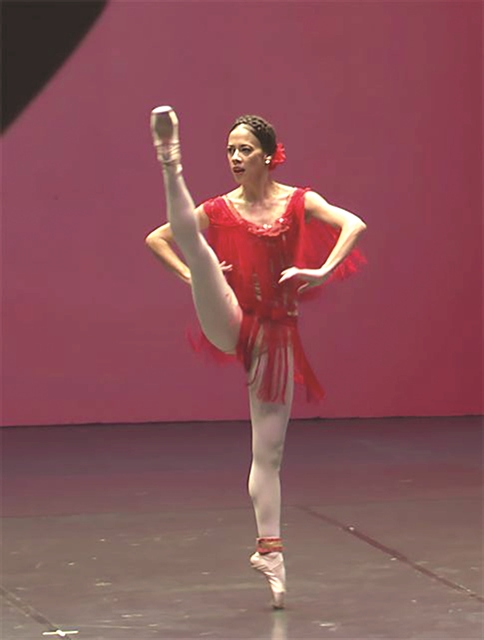 |
| BNC dancer Anette Delgado performs 'Carmen' in Hà Nội's Hồ Gươm Opera House. VNS Photo Đoàn Tùng |
Now, Valdés is giving other dancers their opportunities to shine on the stage and spread the beauty, philosophy, energy and artistry of the Cuban way to ballet around the world.
"It's a difficult time in my life, where I'm running the company and dancing at the same time. That makes for a pretty tight schedule," she said. "It's a demanding time, but I'm doing it with great pleasure because I love what I do."
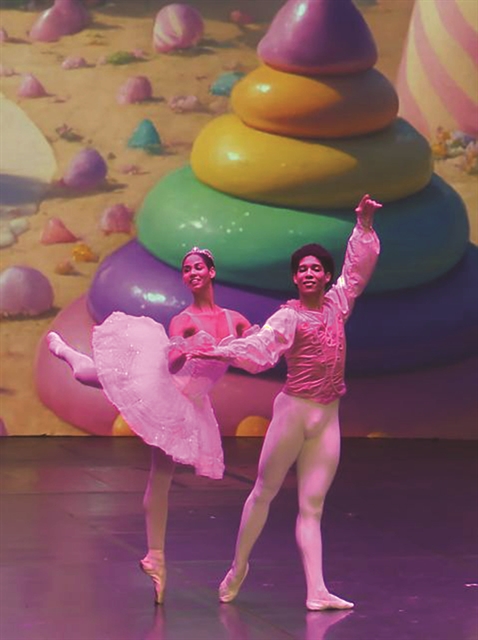 |
| Gabriela Druyet and Anyelo Gonzalez perform 'The Nutcracker'. Photo courtesy of BNC |
Valdés believes that one of her main missions within the leadership of the BNC is to preserve the historical legacy, and to take the company to a global level and a broader audience.
"I would like to take it to every corner of the world, for it to reach Cuban ballet schools anywhere in the world and for us to continue growing artistically," she said. "Truly, the Cuban ballet school is a phenomenon, and was one of the youngest schools created internationally."
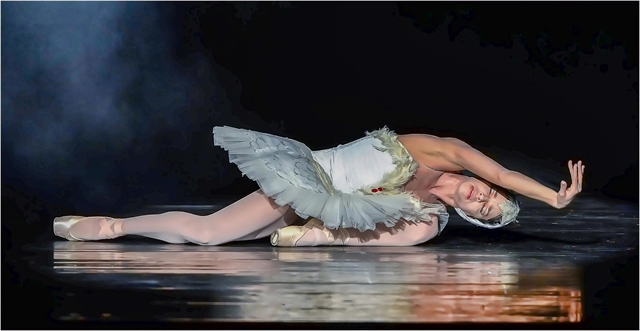 |
| Viengsay Valdés performing 'The Dying Swan' at the Workers Theatre in Hà Nội in 2016. Photo courtesy of Thanh Hà |
Technically, Valdés said the Cuban methodology is very solid, based on other schools, such as French, Italian, Russian and Danish, and they took elements from them to learn the ballet technique.
"We do it in a different way: sensual, with musicality, with sweetness, with perhaps more rounded movements that make us instantly distinguish ourselves from other dancers in the world," she added.
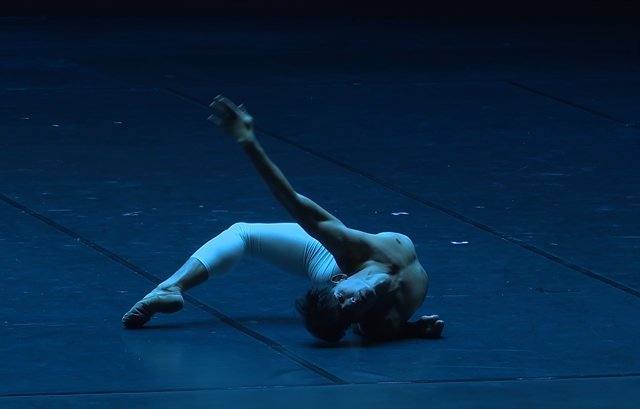 |
| Yankiel Vásquez performs The Dying Swan, choreographed by Michel Descombey. VNS Photo Đoàn Tùng |
In Cuba, education and all artistic expressions, such as music and visual arts, are free and can be studied.
However, it is costly to accompany a ballet troupe with an orchestra.
"For the presentation, we have recordings. At school, we have pianists. There, the pianists accompany the ballet classes. Of course, it's a ballet standard to have a live piano to accompany the classes because that way the dancer trains their ear to execute the movement instantly," Valdés explained.
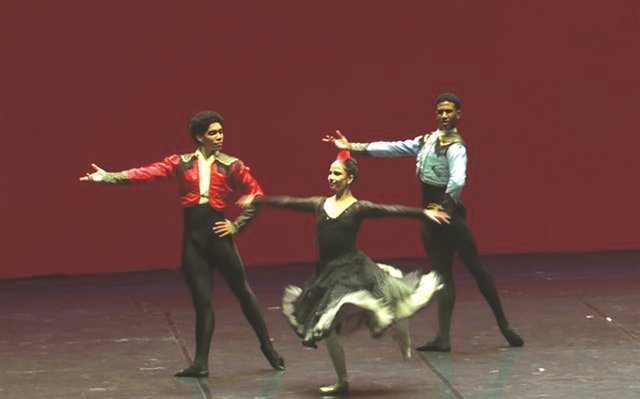 |
| Gretel Morejón, Anyelo Montero and Alejandro Alderete perform at Hồ Gươm Opera House. VNS Photo Đoàn Tùng |
The latest programme was designed to be brought to Việt Nam because of the variety of styles it offers, and as it also showcases the company performing a neoclassical, a classical, and a more contemporary style, which allows the audience to see a wide range of options.
"We have an impressive programme musically, visually and aesthetically. As a small group, we only come as a small representation, so, with the few dancers who sometimes have to perform two or three pieces a night, we've managed to put together a wonderful programme," she said.
One of BNC's strengths has been that they produce talented male dancers with state-of-the-art techniques, despite the fact that the most iconic names are women.
"They're here with us. There are Daniel Hernández and Angelo Montero, who are the main guys here with us, and they're exceptional and can perform different styles," Valdés said.
The line-up boasts The Dying Swan, and Vietnamese audiences have been familiar with the female variation of it. So some jaws may drop when a man comes to the stage.
"This is very old choreography that we have in our repertoire. It has been in the BNC for many years, and is part of the repertoire. But this was made especially for men, not for women," Valdés said.
"It's a big surprise, yes, but it's interesting because in the same programme you can see different styles, not just the classics. You can see neoclassical and contemporary styles in the line-up, and that's why we're bringing it." VNS

